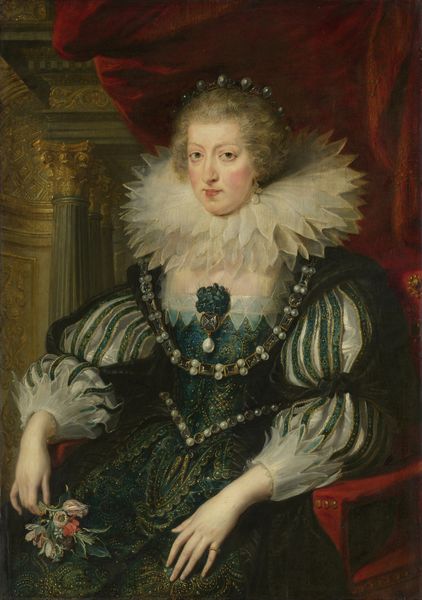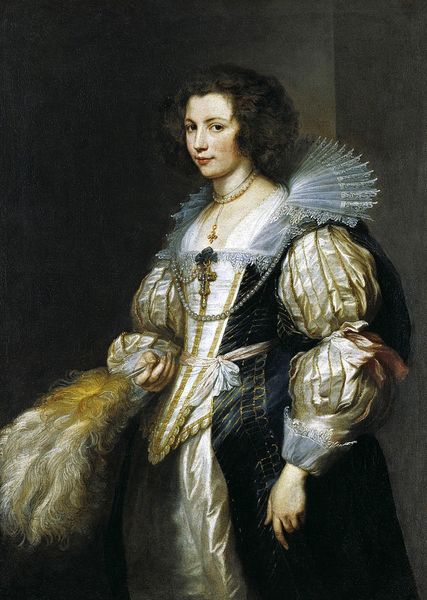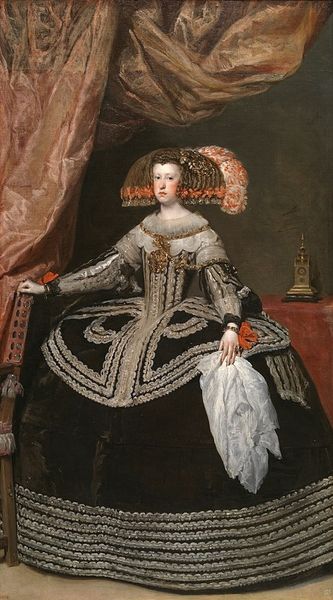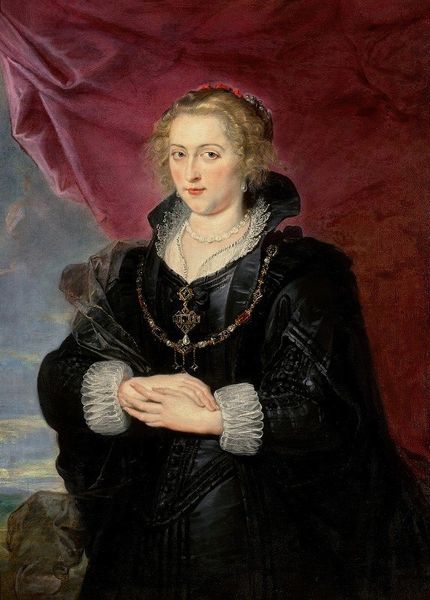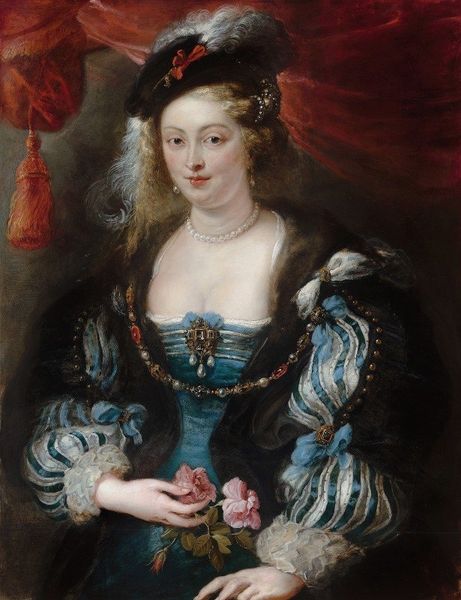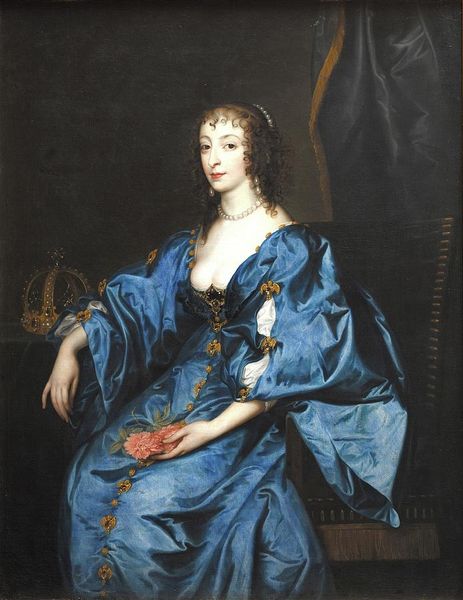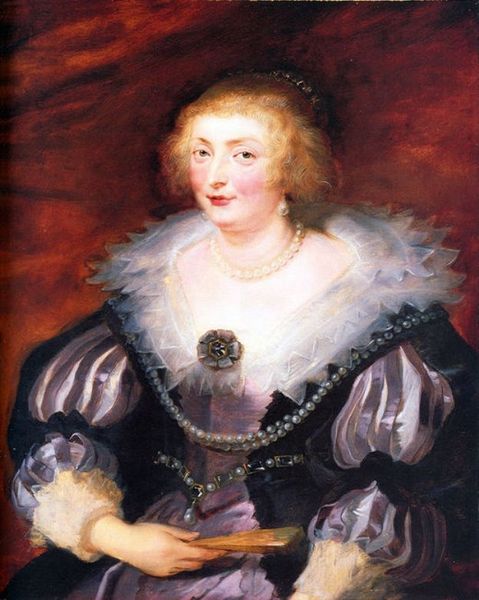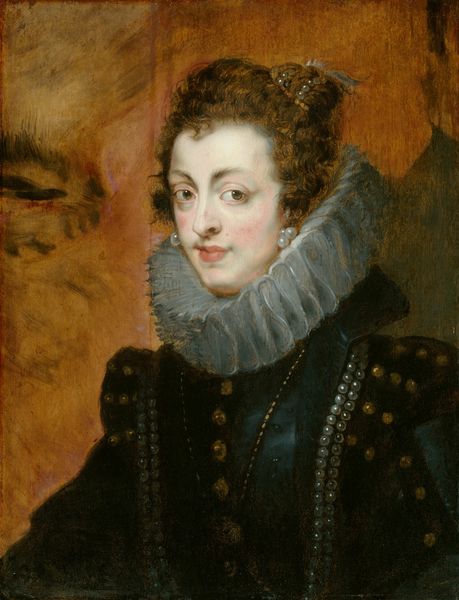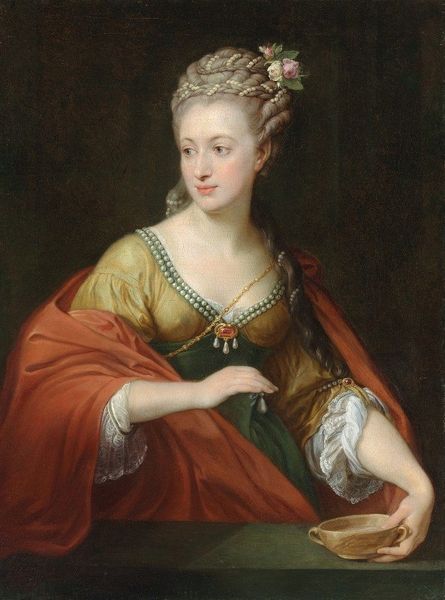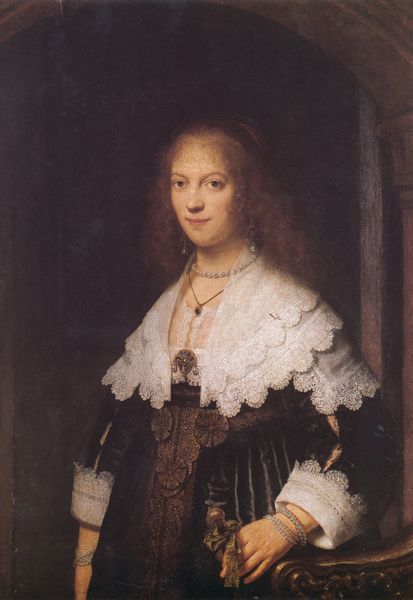
painting, oil-paint
#
portrait
#
baroque
#
painting
#
oil-paint
#
figuration
#
history-painting
#
academic-art
Dimensions: 85 x 37 cm
Copyright: Public domain
Curator: This painting immediately strikes me with its contrast. The crisp white ruff against the dark, ornate gown—it’s visually arresting. Editor: Indeed. What we're observing is Peter Paul Rubens's "Portrait of Anne of Austria," executed around 1622. Consider it within the broader context: portraits of royalty were key in consolidating power. How does this image shape our understanding of Anne's authority? Curator: Her composure is interesting. The formality is undeniable, but there's a hint of weariness in her gaze. The intricate lacework and jewels tell one story—opulence, power, status—but the slightly subdued expression hints at the burdens of queenship. Rubens masterfully captured that duality. Look at how the light catches the pearls! Editor: Absolutely. Think about the staging too. The grand architectural backdrop suggests timelessness and authority. The red drapery conveys the status of monarchy, and the placement of her hand holding flowers can symbolize hope for the future and continuation of her lineage. Rubens certainly employed classic techniques here. Curator: From a purely aesthetic perspective, I am fascinated by the use of chiaroscuro—the dramatic interplay of light and shadow—that brings her figure to life. Her pale face emerges from the dark fabric with subtle gradation, drawing you into that momentary glimpse of human reality amid dynastic pageantry. Editor: It's intriguing to view this in the light of Baroque art serving primarily religious, dynastic, or aristocratic forces. Here the portrait elevates Anne within a historical matrix and helps viewers to understand the monarchy through visuals steeped in wealth. She's presented almost as a sacred icon of royalty. Curator: Perhaps sacred and also just… human? Ultimately, this painting becomes a remarkable study in conveying both a monarch’s persona and the fleeting glimpse of human character and affect behind it. Editor: Agreed. This artwork serves as both a piece of dynastic promotion and as a means through which to understand her role in influencing 17th-century political history through representations.
Comments
No comments
Be the first to comment and join the conversation on the ultimate creative platform.
